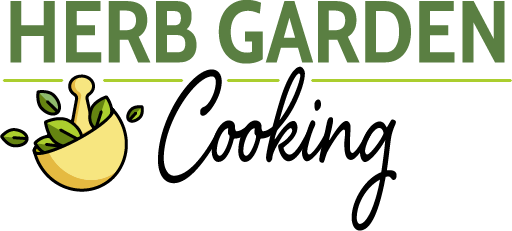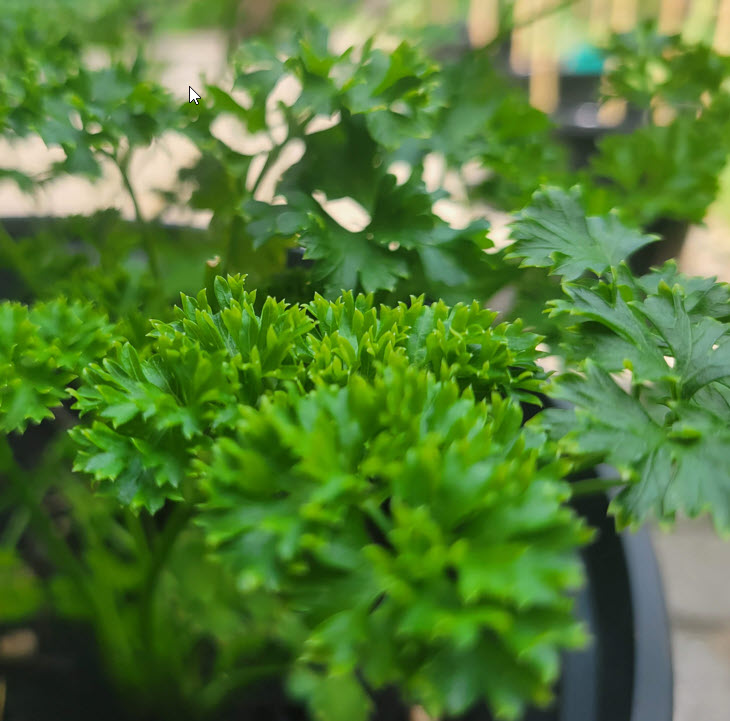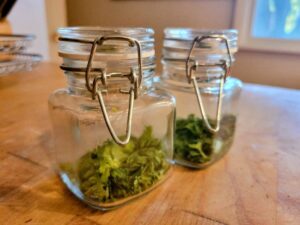This post may contain affiliate links which means I may receive a commission for purchases made through links. I only recommend products that I have personally used. As an Amazon Associate I earn from qualifying purchases. Learn more on my Private Policy page.
Parsley is a Mediterranean herb with a rich history used for culinary and medicinal purposes since ancient times. Parsley is both easy to cultivate and incredibly versatile in the kitchen.
Related Articles:
Table of Contents
Growing Parsley
Growing parsley is a rewarding and straightforward endeavor, making it an ideal addition to any herb garden. Whether you choose leaved parsley or curly leaf parsley, this versatile herb is known for its vibrant flavor and culinary uses.
-
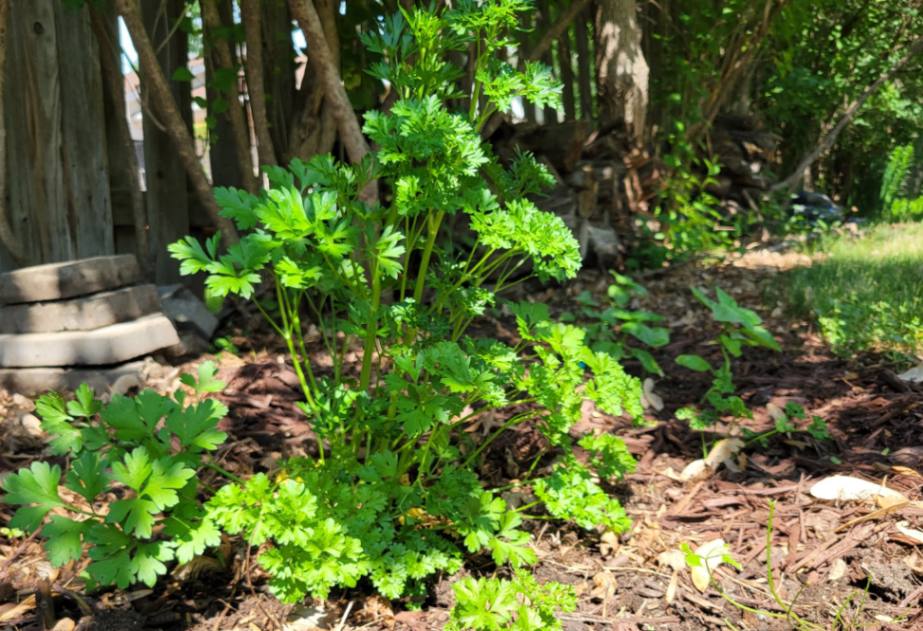
Does Parsley Bolt? (How to Keep It from Bolting)
Bolting is a clear sign that parsley is shifting its focus toward producing seeds rather than developing leaves. Understanding parsley bolting can help you decide when to harvest your herbs for optimal flavor.
-

Harvesting Parsley: Useful Tips for Preservation & Storage
Learn the best techniques for harvesting parsley and storing it for later use. Discover how to keep your parsley plants healthy and thriving.
-

Types of Parsley: Discover the Best Varieties to Grow and Cook
Discover the best parsley varieties to grow and cook, from curly to Italian, Japanese to Hamburg root, enhance your herb garden with different kinds of parsley.
-
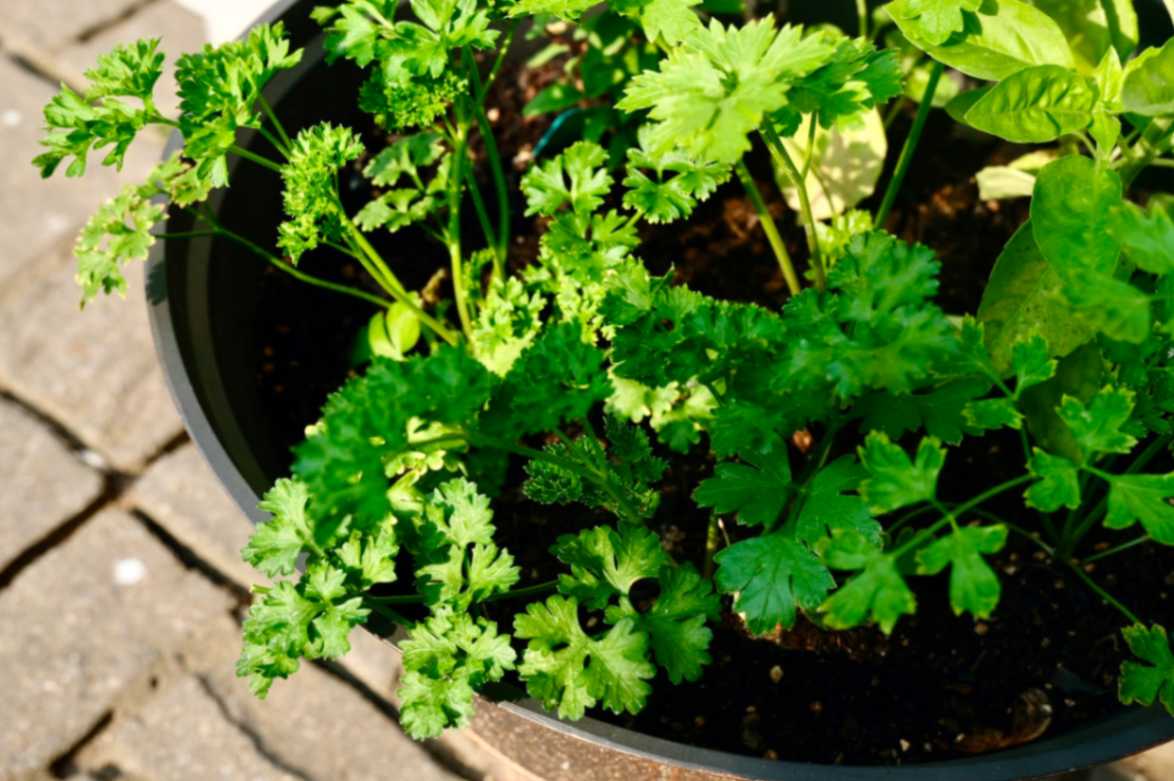
Parsley Companion Planting Guide: Best & Worst Pairings
Discover the best companion plants for parsley and maximize your garden’s potential. Learn how to enhance growth and repel pests with parsley companion planting.
Growing Requirements: Soil, Moisture, and Light
Parsley requires well-draining soil that is rich in organic matter for successful growth. It prefers a pH level between 6.0 and 7.0 for germination and growth. It’s important to keep the soil consistently moist but not waterlogged.
Parsley thrives in full sun but can also tolerate partial shade. Some afternoon shade can prevent the plant from wilting under intense heat if you live in a region with scorching summers.
Hardiness of Parsley
One of the many benefits of growing parsley is its extreme cold hardiness, as it can withstand much cooler temperatures than most other herbs. Several parsley varieties are hardy down to zone 2. If you’re unsure what zone you live in, refer to the USDA Hardiness Zone map.
Types of Parsley
There are two main varieties of parsley: curly-leaf parsley and Italian parsley (or flat-leaf parsley). Curly parsley features tightly curled leaves with a mild taste, while Italian parsley delivers a bold flavor and robust texture.
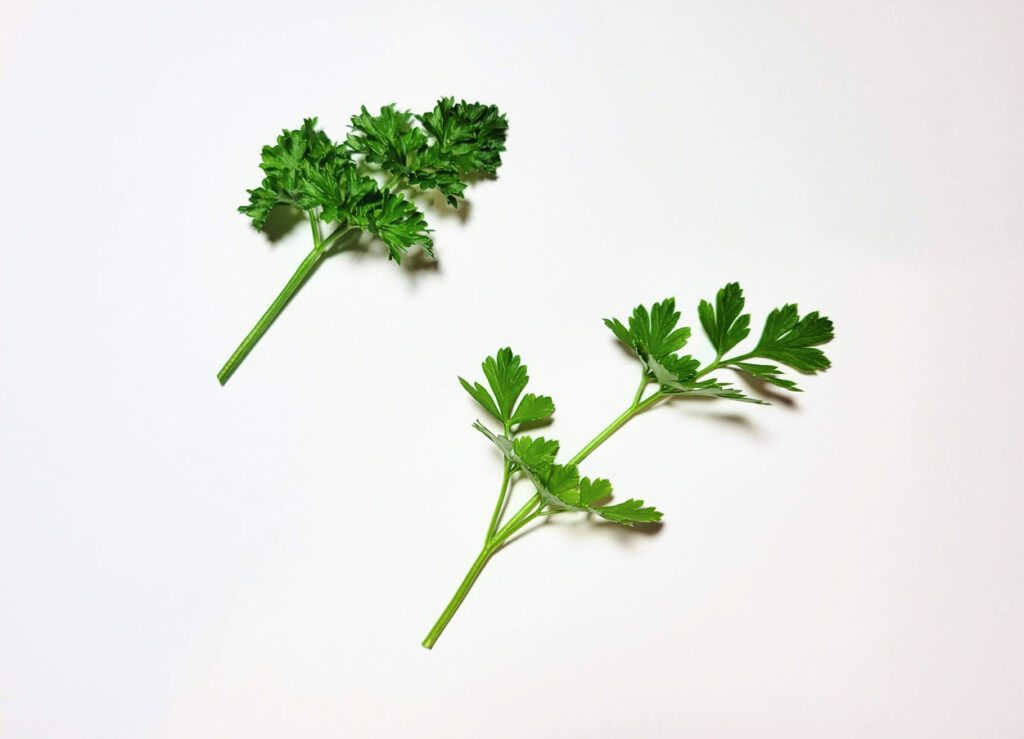
Harvesting Parsley
Harvesting fresh parsley leaves is a relatively simple process. You can begin harvesting once your parsley plants reach a height of around 6-8 inches (15-20 cm) and the leaves are 2-3″ long (5-8 cm).
To harvest fresh herbs such as parsley, snip off individual leaves or cut entire stems close to the base using sharp scissors, working from outside inward. Regular harvesting promotes bushier growth and ensures a continuous supply of fresh herbs for your culinary endeavors.
For more detailed information, see my article on harvesting parsley to ensure your harvesting techniques will maintain the health of your plants.

Preserving Parsley
Drying and freezing are the most effective ways to preserve parsley beyond the growing season.
To dry parsley, using a food dehydrator or drying parsley in an air fryer are the methods I would recommend. See my article on how to dry parsley to learn the best ways to dry parsley and how to do them.
How to Dry Parsley: 4 Easy Methods
Drying parsley is a simple yet rewarding process that allows you to preserve this versatile herb for extended use. Before drying, wash off your parsley and pat it dry. Read More…
While you can air dry parsley by tying small bunches together and hanging them upside down in a well-ventilated area for several weeks, I’ve found this isn’t an ideal method due to discoloration and lack of quality after drying.
Alternatively, you can freeze fresh parsley by chopping it finely and placing it in ice cube trays filled with water or olive oil. This method lets you easily add parsley to your dishes throughout the year.
Culinary Uses of Parsley
Parsley finds its place in a variety of culinary traditions worldwide. It is widely used in European, Middle Eastern, and American cuisines for its fresh flavor and vibrant appearance.

Dishes and Cuisines Where Parsley is Commonly Used
Parsley is a staple ingredient in many dishes across various cuisines. Its versatility allows it to be incorporated into numerous recipes, adding depth and complexity to the flavors.
- Soups: Parsley adds a refreshing note to soups like chicken noodle or minestrone. Its bright flavor cuts through the richness of the broth, providing balance to the overall taste.
- Salads: Whether a simple green salad or something more elaborate, parsley brings freshness and vibrancy to the dish. It pairs well with common salad ingredients like tomatoes, cucumbers, and feta cheese.
- Sauces: Parsley is often used as an essential component in sauces such as pesto or chimichurri. Its fresh taste complements the richness of olive oil and garlic, creating a harmonious blend of flavors.
Parsley as a Garnish for its Decorative Appeal
In addition to being an integral part of various dishes, parsley also commonly serves as an attractive garnish due to its vibrant green color and delicate leaves. Its decorative appeal enhances the visual presentation of plates and adds a touch of elegance to any meal.
Pairing Parsley with Other Ingredients
Parsley can be paired with other ingredients to elevate their taste profiles further. Some popular combinations include:
- Lemon and Parsley: The zesty brightness of lemon complements parsley’s fresh flavor. They create a refreshing combination that works well in seafood dishes, dressings, and marinades.
- Garlic and Parsley: Parsley and garlic are a classic pairing in many recipes. The earthiness of garlic enhances the freshness of parsley, resulting in a dynamic flavor combination commonly used in Mediterranean cuisine.
- Mint and Parsley: Combining parsley with mint creates a refreshing and aromatic blend. This combination is often found in Middle Eastern dishes like tabbouleh, where the two herbs work harmoniously to create a light and flavorful salad.
Nutritional Value of Parsley
Parsley is a flavorful herb and a powerhouse of nutritional benefits.
Nutrition Composition
Parsley is packed with essential vitamins and nutrients that are vital for our overall health. Parsley contains high levels of vitamins A, C, K, and folate.
- Vitamin A is crucial for maintaining healthy vision.
- Vitamin C supports the immune system and promotes collagen production.
- Vitamin K plays a role in blood clotting, bone health, and heart health.
- Folate is necessary for proper cell division and DNA synthesis.

Rich in Antioxidants
One of the key reasons parsley is considered beneficial for our health is its abundance of antioxidants. These plant compounds help protect our cells from oxidative stress caused by harmful free radicals in the body. By neutralizing these free radicals, parsley may help reduce the risk of chronic diseases such as heart disease, cancer, and neurodegenerative disorders.
Flavonoids in Parsley
Parsley contains flavonoids, which are plant pigments with powerful antioxidant properties. Some studies suggest that these flavonoids may have anti-inflammatory properties as well. Inflammation is linked to various chronic conditions like arthritis, heart disease, and certain types of cancer. Incorporating parsley into your diet may help combat inflammation and promote better overall health.
Common Home Remedies Using Parsley
Apart from its nutritional value, parsley has been used traditionally in home remedies for several ailments:
- Digestive Aid: Parsley has been used to alleviate digestive issues such as bloating, gas, and indigestion.
- Bad Breath Remedy: Chewing on fresh parsley leaves can help freshen breath due to its natural deodorizing properties.
- Diuretic Effect: Parsley acts as a diuretic, promoting urine production and aiding in flushing out toxins from the body.
- Menstrual Support: Some women use parsley tea to help regulate menstrual cycles and relieve symptoms such as cramps.
While these home remedies are commonly used, it’s important to note that parsley should be consumed in moderation. Large amounts of parsley can have adverse effects, especially for pregnant women or those taking certain medications. Always consult with a healthcare professional before using parsley medicinally.
Parsley’s nutritional value makes it a valuable addition to any diet. Whether you sprinkle it on your dishes for added flavor or incorporate it into homemade remedies, this humble herb offers a variety of health benefits.
Historical Background of Parsley
Parsley has a rich historical background that stretches back centuries. Let’s delve into the origins and significance of this popular culinary herb.
Origins in the Mediterranean and Sardinia
Parsley is believed to have originated in the Mediterranean region. It is thought to have first been cultivated on the island of Sardinia. The nutrient-rich soil and favorable growing conditions allowed parsley to flourish, making it a staple ingredient in Sardinian cuisine.
Became Popular in Europe During the Middle Ages
During the Middle Ages, parsley gained widespread popularity across Europe. It was highly regarded not only for its culinary uses but also for its medicinal properties. European monasteries were crucial in cultivating and preserving herbs like parsley, further contributing to its popularity during this time.

Historical Significance of Parsley
Parsley holds cultural and symbolic significance in different societies throughout history.
- In ancient Greek mythology, parsley was associated with Achromous, who was believed to be the herald of death. This association led to certain superstitions surrounding parsley where people believed that picking or cutting parsley could bring misfortune or even death.
- In medieval times, parsley was considered a symbol of victory and honor.
- Ancient Romans used it as a decorative element during celebrations and banquets due to its lush green appearance.
Conclusion
Parsley is not just a simple herb used for garnishing dishes. It holds a rich history and has remarkable properties. From its ancient origins to its widespread culinary uses today, parsley has become a versatile and valuable herb. Whether you’re growing it in your garden or using it in your recipes, there’s much to appreciate about this humble green plant.
Frequently Asked Questions (FAQs)
Can I grow parsley indoors?
Parsley is well-suited for indoor cultivation. While parsley is known for taking a long time to germinate, it is not too difficult to grow. For an in-depth guide on starting herbs indoors, check out my article on How to Grow Herbs from Seeds Indoors.
Can I eat parsley every day?
While consuming small amounts of parsley as part of your daily diet is generally safe for most people, moderation is key. Eating large quantities of parsley may have diuretic effects due to its high content of certain compounds like apiol. It’s always best to consult with a healthcare professional if you have any concerns or specific dietary restrictions.
Is curly or flat-leaf parsley better?
Both curly and flat-leaf (Italian) parsley varieties have unique characteristics and flavors. Curly parsley tends to have a milder taste and is often used as a garnish, while flat-leaf parsley has a stronger flavor that works well in cooking.
For further information on the differences between parsley varieties, see my article about the different types of parsley.
Can I freeze fresh parsley?
Freezing fresh parsley is an excellent way to preserve its flavor and extend its shelf life. Wash the leaves thoroughly, pat them dry, chop them finely if desired, and place them in an airtight container or freezer bag. Frozen parsley can be added directly to recipes without thawing, making it a convenient option for year-round use.
Are there any potential health risks associated with consuming parsley?
While parsley is generally safe for consumption, some individuals may experience allergic reactions or interactions with certain medications. If you have known allergies or are taking specific medications, it’s advisable to consult with your healthcare provider before incorporating large amounts of parsley into your diet.
Last Updated on 1 December 2023 by Bob Lee
